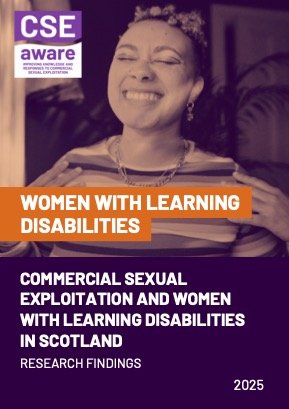By CSE Aware
The United Nations and other experts have highlighted that women with learning disabilities (LDs) are at higher risk of experiencing gender-based violence (GBV) because of the lifelong isolation, dependency and oppression they often they experience. These inequalities also put them at risk of commercial sexual exploitation (CSE). Despite global recognition of these impacts, in Scotland to date there is very limited evidence and information on how commercial sexual exploitation affects women with learning disabilities. In the recent report Unequal, Unheard, Unjust: But not Hidden Anymore,the Scottish Commission forPeoplewithLearningDisabilities (SCLD) highlighted SEason of the types of GBV women with learning disabilities experienced. What’s more, this groundbreaking report specifically recommended that the Scottish Government “commission national research examining the commercial sexual exploitation of women with learning disabilities in Scotland,” noting the lack of documented information. While some information does exist about learning disabled women’s experiences of selling or exchanging sex, it is mostly anecdotal and has not been documented nor analysed to truly understand the effects on this population and the effectiveness of, andgaps in, service responses.The present report was born from therecognition that there is a significant knowledge gap on the issue of CSE and its intersection with this particularly vulnerable group of women. Whilst the present report is not the much needed full-scale research which SCLD and ourselves are calling for (see recommendations), it does provide initial findings and recommendations from the exploratory researchweconductedoverthecourseofthreemonths. The Aims Of This research were to: Collect and document evidence of learningisabledwomen’sexperiencesof sellingorexchangingsex. Understandthedynamicsofwomen’s involvement and their specific needs. Explore service responses and challenges and opportunities when addressing women's experiences and needs. Produce Initial Recommendations thattheScottishGovernment and organisations canuseas abasis to design service and policy responses that meet theneeds women with LDs impacted byCSE.
Glasgow: CSE, 3035. 32p.



